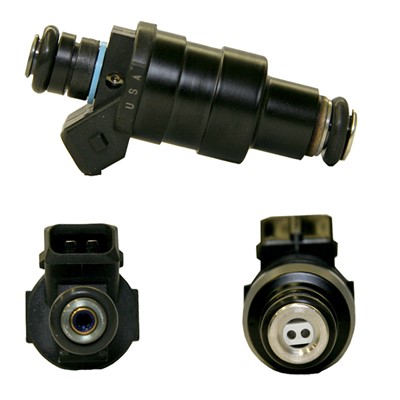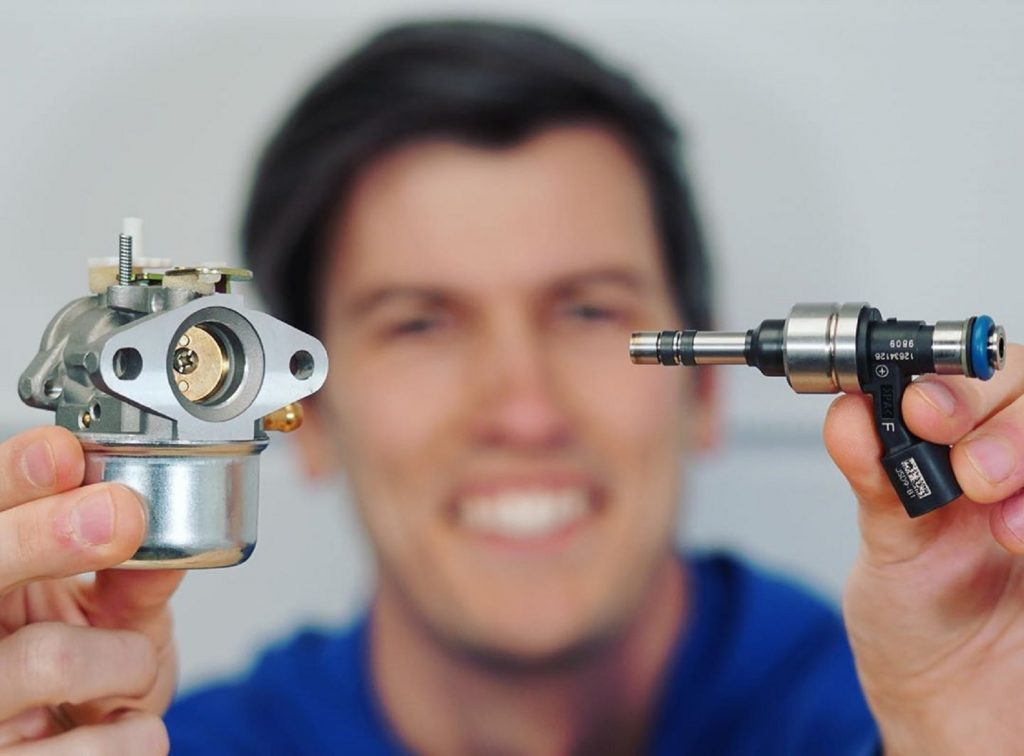Not known Factual Statements About Fuel Injectors
Table of ContentsThe Fuel Injectors PDFs8 Easy Facts About Fuel Injectors ShownThe Facts About Fuel Injectors Revealed
The fuel is injected just into the pre-chamber (where it begins to combust), and not directly into the primary combustion chamber. Therefore, this concept is called indirect injection. There exist numerous slightly various indirect injection systems that have similar characteristics. All Akroyd (hot-bulb) engines, and some Diesel (compression ignition) engines use indirect injection.This can be done either with a blast of air (air-blast injection), or hydraulically. The latter approach is even more typical in vehicle engines. Normally, hydraulic direct injection systems spray the fuel into the air inside the cylinder or combustion chamber, but some systems spray the fuel against the combustion chamber walls (M-System).
The latter is the most common system in modern-day vehicle engines. Direct injection is appropriate for a big range of fuels, consisting of gas (see gas direct injection), and diesel fuel. In a typical rail system, the fuel from the fuel tank is provided to the typical header (called the accumulator).
The header has a high pressure relief valve to maintain the pressure in the header and return the excess fuel to the fuel tank. The fuel is sprayed with the help of a nozzle that is opened and closed with a needle valve, operated with a solenoid. When the solenoid is not activated, the spring requires the needle valve into the nozzle passage and avoids the injection of fuel into the cylinder.

Third-generation typical rail diesels utilize piezoelectric injectors for increased accuracy, with fuel pressures as much as 300 MPa or 44,000 lbf/in2 - fuel injectors. Air-blast injection system for a 1898 diesel engine In 1872, George Bailey Brayton obtained a patent on an internal combustion engine that utilized a pneumatic fuel injection system, also invented by Brayton: the air-blast injection.
Most especially, Diesel increased the air-blast pressure from 45 kp/cm2 (390490 kPa) to 65 kp/cm2 (6,400 kPa). The first manifold injection system was developed by Johannes Spiel at Hallesche Maschinenfabrik in 1884. In the early 1890s, Herbert Akroyd Stuart established an indirect fuel injection system using a 'jerk pump' to meter out fuel oil at high pressure to an injector.
A manifold-injected Antoinette 8V aviation engine, installed in a preserved Antoinette VII monoplane aircraft. In 1898, Deutz AG started series production of fixed four-stroke Otto engines with manifold injection. Eight years later, Grade equipped their two-stroke engines with manifold injection, and both Antoinette 8V and Wright airplane engines were fitted with manifold injection also.
The Single Strategy To Use For Fuel Injectors


Due to the wartime relationship in between Germany and Japan, Mitsubishi also had 2 radial airplane engines using petrol direct injection, the Mitsubishi Kinsei and the Mitsubishi Kasei. The very first automotive direct injection system used to run on petrol was established by Bosch, and was presented by Goliath for their Goliath GP700, and Gutbrod for their Superior in 1952.
The 1954 Mercedes-Benz W196 Formula 1 racing car engine used Bosch direct injection stemmed from wartime airplane engines. Following this racetrack success, the 1955 Mercedes-Benz 300SL, became the first automobile with a four-stroke Otto engine that used direct injection. Later on, more traditional applications of fuel injection preferred the less-expensive manifold injection.
6 litre V8 with Rochester manifold fuel injection Unpowered, constantly injecting multi-point injection Bosch K-Jetronic Throughout the 1950s, several producers introduced their from this source manifold injection systems for Otto engines, consisting of General Motors' Rochester Products Department, Bosch, and Lucas Industries. During the 1960s, extra manifold injection systems such as the Hilborn, Kugelfischer, and SPICA systems were presented.
Preliminary issues with the Electrojector suggested only pre-production automobiles had it set up so very couple of cars were sold and none were provided to the general public. The EFI system in the Rambler worked well in warm weather, but was tough to start in cooler temperatures. Chrysler offered Electrojector on the 1958 Chrysler 300D, DeSoto Adventurer, Dodge D-500, and Plymouth Fury, probably the first series-production automobiles geared up with an EFI system.
The D in D-Jetronic stands for Druckfhlergesteuert, German for "pressure-sensor managed"). The D-Jetronic was first used on the VW 1600TL/E in 1967. This was official site a speed/density system, using engine speed and consumption manifold air density to compute "air mass" circulation rate and hence fuel requirements. Bosch superseded the D-Jetronic system with the and systems for 1974, though some automobiles (such as the Volvo 164) continued using D-Jetronic for the following several years.
4 Simple Techniques For Fuel Injectors
This technique needed additional sensing units to measure the atmospheric pressure and temperature level, to compute mass circulation rate. L-Jetronic was widely adopted on European automobiles of that period, and a couple of Japanese models a brief time later on. The first digital engine management system (engine control system) was the Bosch Motronic introduced in 1979.
The EEC-III a single-point injection system. Manifold injection was phased in through the latter 1970s and 80s at an accelerating rate, with the German, French, and U.S. markets leading and the UK and Commonwealth markets lagging rather. Given that the early 1990s, almost all fuel automobile sold in very first world markets are geared up with electronic manifold injection.
Fuel injection systems are slowly replacing carburetors in these nations too as they embrace emission policies conceptually similar to those in force in Europe, Japan, Australia, and The United States And Canada. In 1995, Mitsubishi presented the very first common-rail petrol direct injection system for automobile. fuel injectors. It was introduced in 1997. Consequently, common-rail direct injection was also presented in automobile diesel engines, with the Fiat 1.